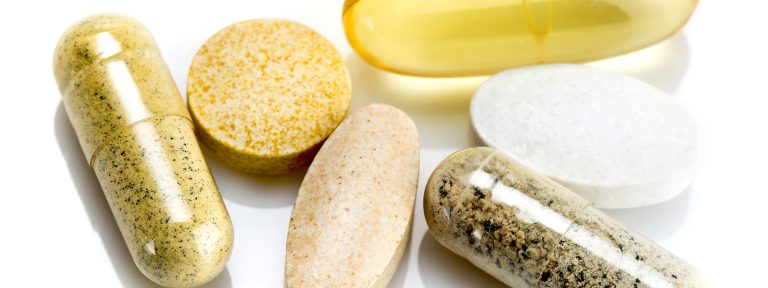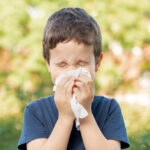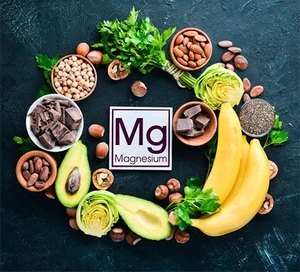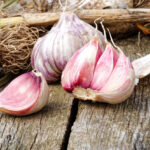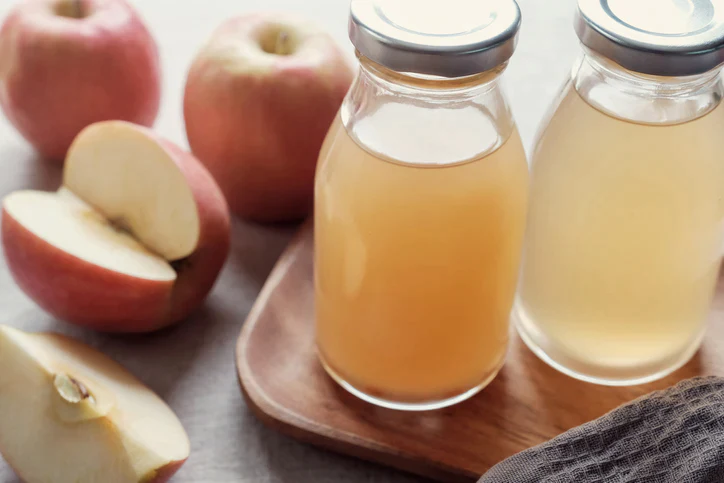By Sharon Vile And The Mother Earth News Editors
Make a medicinal herb garden plan from a healing herbs list for time-tested remedies for common ailments.Since the dawn of history, humans and animals have sought healing from plants. Although many of today’s most popular curatives are compounded in laboratories, there are still vast numbers of commercial remedies whose major medicinal ingredients are derived from green herbs, trees, and shrubs. But you needn’t rely on store-bought products for botanically based medicine: Many of the most common and effective healing plants can be grown in your own healing garden, in a backyard as lovely as it is useful.Selecting CurativesThere are hundreds, perhaps even thousands, of plants with medicinal value. While some of these are too tender for North American climates and others grow so rampantly that they’re undesirable in a garden setting, there are still many good candidates from which to choose. Most public libraries and bookstores offer a number of excellent herbals that can help you select the plants most suitable for your needs and your region (a list of recommended titles accompanies this article). Further assistance can be obtained from local nurseries and from catalogs published by mail-order herb suppliers. When ordering or buying herbs, always be sure to refer to plants by their Latin as well as their common names, because popular labels can vary from one area to another.Although you may want to cultivate only those herbs that relieve simple ailments and complaints, a good medicinal garden often contains some species that are planted strictly for their beauty or their historical interest. Foxglove and male fern, bloodroot and rue, for example, are all handsome plants that are just too powerful for anyone but a highly trained physician, pharmacologist, or herbalist to use safely as internal remedies.The EssentialsMost herbal medications are easy to prepare. The majority involve making an infusion, or tea, by pouring boiling water over leaves, stems, and/or flowers and allowing them to steep for a while. (One ounce or one-half ounce of herb to a pint of water is the usual proportion, with a steeping time of ten minutes or so.) Decoctions are made to extract the volatile principles from hard or woody parts such as bark or roots. The process requires boiling the pieces in water for three or four minutes, then allowing them to steep for an additional two to ten minutes (depending on the hardness of the materials and the strength desired).Cold extracts are like teas, but require double the amount of herb, which is steeped in cold water for some 10 to 12 hours. A tincture is produced by steeping a dried, powdered herb in a one-to-one solution of alcohol and water for about two weeks. The bottle is shaken daily, and at the end of the period the herb is strained away and the liquid poured into a clean container for storage.Poultices are made by crushing or bruising the medicinal parts of a plant, heating the resulting pulp, and then applying it directly to the affected area. If the plant is an irritant, such as mustard, the pulp is sandwiched between two layers of cloth. Fomentations are similar to poultices but milder in effect. To make these, a cloth is saturated with hot herb tea, wrung out, and then applied (as hot as can be tolerated) to the afflicted spot.The essential oil of an herb can be obtained by any of four methods. [1] Steam distillation requires such apparatus as a still, condenser, and receiver. [2] In extraction the oils are dissolved out of the plant with alcohol or other volatile solvents and then distilled until a pure oil is obtained. [3] Enfleurage involves spreading flowers or aromatic leaves between trays of unheated, purified fat, which absorbs the oils. The resulting pomade is then treated with an alcohol solvent to remove the scented oil. [4] During maceration the leaves or other plant parts are left in warm fat for several days, and the oils are later washed out with alcohol.Water will also remove the oils if it’s poured into a crock filled with the aromatic parts of the herb (leaves, say, or petals) and left for a week or so in a spot where the sun strikes it. Attar of roses, which can be made from the petals of several varieties of old-fashioned rose, is obtained in this manner (although it takes an enormous quantity of petals). The resulting oil has an antiseptic strength many times greater than that of carbolic acid.One way to preserve an herbal medicine meant for external use is to brew a strong tea, strain out the plant material, and then mix the liquid with an equal part of glycerin. The glycerin acts as a preservative and feels soothing to the skin.Materia MedicaThe following herbs are shown in two diagram. One garden contains plants that will thrive along a shady wall, and the other is designed for a sunny, open area. Most of the plants listed are useful for one or more complaints, such as colds, upset stomach, headache, insomnia, nervousness, cuts, bruises, scrapes, chapped or allergy-irritated skin, and acne. Plants marked with an asterisk are potentially dangerous and should be used only by trained and expert herbalists (remember, too, that any substance, if misapplied or overused, can be harmful!). And some physicians doubt the medicinal value of any herbs, despite centuries of use.

Shady Healing Garden

Angelica (Angelica archangelica): Used for bronchitis and chest complaints, angelica is said to relieve the pain of gout and rheumatism, and can be used as an eyewash and skin refresher. A 3/8-teaspoon dose of the powdered root helps guard against infection during a fast.*Bloodroot (Sanguinaria canadensis): A powerful stimulant, expectorant, and emetic, bloodroot can be safely applied externally as a powder to skin eruptions and ulcers, nose polyps, and slow-healing sores.Catnip (Nepeta cataria): Catnip tea is a pleasant household remedy for nervousness, upset stomach, chronic bronchitis, colic, spasms, flatulence, or diarrhea.*Columbine (Aquilegia vulgaris): The fresh roots mashed in olive oil relieve rheumatism; the mashed and moistened seeds repel head lice; and a lotion made from the leaves soothes mouth and throat sores.

*Comfrey (Symphytum officinale): An excellent “drawing” poultice for wounds, infections, bruises, insect bites, and pulled tendons, comfrey is also used as a tea to relieve asthma, rheumatism, ulcers, bleeding gums, and throat inflammations, although it’s currently under investigation as a possible carcinogen. Its common name, “Knitbone”, is no doubt derived from the fact that its roots and leaves contain allantoin, a substance used to promote healing. Comfrey is considered a major healing herb.Costmary (Chrysanthemum balsamita): This herb can be used to treat colic and upset stomach. The sweetly mint-scented leaves make a healing ointment for sores and scrapes when boiled and simmered for 10-15 minutes with 1/2 cup of olive oil, a tablespoon of pine oil, and a little beeswax, and then strained and poured into widemouthed jars and cooled.*Foxglove (Digitalis purpurea): The leaves of this beautiful garden flower yield digitalis, a cardiac stimulant and tonic. Incidentally, handling the plant gives some people a rash and headache.
Heartsease (Viola tricolor): This botanical is used as a blood-cleaning tonic and to relieve chest and lung inflammation and skin eruptions. The powdered plant may be applied to wounds to promote healing.

Lady’s Mantle (Alchemilla vulgaris): An infusion of the plant–4 teaspoons of dried herb steeped in 1 cup of water for 10 minutes–will stimulate the appetite, relieve diarrhea, and stem internal bleeding (it acts as a coagulant). Either the infusion or a poultice is good to apply to wounds.*Male Fern (Dryopteris filix-mas): This herb is most famous for expelling tapeworms, but it’s powerful and dangerous to take internally. One pound of the rootstock boiled in water can be added to a foot bath to relieve varicose veins, however, so its appearance in the garden needn’t be strictly ornamental.Parsley (Petroselinium crispum): Used for combating halitosis and (in the days of the ancient Greeks) drunkenness, parsley can help in cases of dropsy, conjunctivitis, coughs, and bruises … but it’s best known as a powerhouse of nutrition.*Pennyroyal (Mentha pulegium): Most everyone knows the plants helps repel fleas.Primrose (Primula vulgaris): To treat headaches, insomnia, nervousness, or general weakness, make a tea of the flowering plant. A decoction of the rootstock makes a good expectorant, helpful in cases of lung congestion, coughs, and bronchitis.

Self-Heal (Prunella vulgaris): An infusion of the fresh herb in May, when it’s most potent, makes a strengthening tonic and a gargle that relieves inflammation of the tongue, mouth, and throat. The bruised plant makes a styptic salve to stanch cuts.Solomon’s Seal (Polygonatum multiflorum): The roots make a poultice for bruises, inflammations, and wounds. A wash made from an infusion of the whole plant was at one time used for skin blemishes and the ravages of poison ivy.Sweet Cicely (Myrrhis odorata): The roots can be eaten fresh for coughs, weak stomachs, and flatulence, while an infusion in brandy or water is reputed to be a valuable tonic and gentle stimulant. Aromatic in all its parts, the herb can be used much like anise.Sweet Violet (Viola odorata): The leaves can be used as a blood cleanser. An infusion eases nervousness, insomnia, headaches, respiratory problems, and the pains of throat cancer (claims have even been made that it effected a cure).Sweet Woodruff (Galium odoratum): Woodruff is a gentle stimulant and blood tonic, with leaves that are mildly anesthetic. A tea helps insomnia and stomach pain.Wild Ginger (Asarum canadense): An infusion of the roots can relieve colic, flatulence, and upset stomach, and a strong decoction of the rootstock was used by the women of one Amerindian tribe as a contraceptive. Wild ginger can substitute for the Asiatic variety in recipes.Sunny Healing Garden

Anise (Pimpinella anisum): The seeds can be chewed to sweeten the breath or added to hot milk and taken before bedtime to prevent insomnia. Anise promotes digestion, improves the appetite, eases cramps and nausea, and relieves flatulence and colic, especially in infants.Basil (Ocimum basilicum): Basil tea relieves stomach cramps, headache, diarrhea, vomiting, and enteritis. A poultice can draw the poison from insect bites.Bee Balm (Monarda didyma): This popular herb can be used as a medicine for colds or sore throats, as a sedative, and as a tonic against depression. Bee balm tea can also relieve nausea, vomiting, fever, and diarrhea. The fresh leaves are said to repel gnats and mosquitoes.

Borage (Borago officinalis): Used internally for fevers and lung problems, borage promotes sweating, restores vitality, and is somewhat anti-inflammatory. Poultices are useful for skin problems but may actually cause dermatitis in some people.Calendula (Calendula officinalis): The tea or the fresh-squeezed juice can be taken for stomach cramps, ulcers, colitis, diarrhea, fever, boils, abcesses, or recurrent vomiting. The salve or diluted tincture is good for sprains, bruises, boils and sores.Chamomile (Chamaemelum nobile): Many people are familiar with chamomile tea, which can be used as a sedative and for fever. Chamomile oil can be taken internally for colic, spasms, and stomach cramps; as a rubbing oil it relieves swellings, calluses, and painful joints.Clary Sage (Salvia sclarea): Best known as a remedy for eye inflammations (as a mucilage of the seeds or decoction of the herb), clary sage also produces a tea that can be taken for heat prostration, indigestion, hysteria, and tumors.Dill (Anethum graveolens): Like anise, dill seeds are good for halitosis, flatulence, and colic; they also stimulate the appetite and promote the flow of milk. An unusual remedy for hiccups calls for boiling the seeds in wine and inhaling the scent.

Elecampane (Inula helenium): A rich source of an alkaloid that’s bactericidal and antiseptic, elecampane is used as a tea to relieve coughing and tone the stomach, as a wash for scabies and itching, and as a decoction to expel worms. The oil is used for respiratory problems and diarrhea.
Garlic (Allium sativum): A major medicinal herb, garlic helps fight internal and external infections and is reputed to arrest tumors and to lower blood pressure. Garlic’s uses are legion.Horehound (Marrubium vulgare): Used primarily as a remedy for coughs, sore throats, and bronchial complaints, horehound calms heart action and restores the balance of internal secretions.Hyssop (Hyssopus officinalis): Use hyssop tea for poor digestion, coughs, nose and throat infections, and flatulence. A decoction relieves inflammations and may be used as a wash for burns and bruises. Apply the crushed, fresh leaves to wounds and bruises to prevent infection.Lavender (Lavandula augustifolia): The oil is used for headaches and to revive fainting victims, and has antiseptic properties. A decoction of the leaves helps stomach problems, nausea, and vomiting. The scent is a mild stimulant.Lemon Balm (Melissa officinalis): Make a poultice from the leaves for sores, tumors, and insect bites. Drink the tea to relieve dyspepsia, headaches, bronchial catarrh, and toothache . . . or add it to the bathwater for nervous tension and insomnia.Marjoram (Origanum majorana): Marjoram’s many medicinal uses include the relief of colic, upset stomach, cramps and nausea, sprains, varicose veins, headache, toothache, and insomnia.Mint (Mentha species): Two of the best-known species of mint are spearmint, which helps expel gas and stimulates the appetite, and peppermint, which relieves gas pains, nausea, vomiting, and diarrhea, and has antibacterial properties. Most varieties make a delicious tea.

Mullein (Verbascum thapsus): Boil the leaves and inhale the steam to relieve lung congestion. The leaf tea helps coughs, bronchitis, and hoarseness, while the flower tea relieves pain and induces sleep. Fomentations help skin conditions and inflammations, and poultices or the powdered dry leaves can be used for wounds and sores.Rose (Rosa species): Rose petal tea is drunk for headache and dizziness and as a heart and nerve tonic, while a powder or tincture is said to be useful for hemorrhages. Rosewater makes a good ointment for rough, chapped skin.*Rosemary (Rosmarinus officinalis): Salve made from the oil is used for sores, rheumatic joints, eczema, and wounds. Taken internally, rosemary improves circulation and raises blood pressure, but excessive amounts can cause fatal poisoning.*Rue (Ruta graveolens): Rue is used primarily to relieve the pain of gout and to treat palpitations. The tea relieves gas pains and cramps caused by nervous indigestion. Large doses may cause mild poisoning, and certain people are allergic to the leaves.Sage (Salvia officinalis): Some antifungal and antibacterial properties contribute to sage’s reputation as an important healing herb. The tea makes a good gargle for sores in the mouth and throat, helps remove excessive mucus from the lungs and stomach, prevents night sweats, and alleviates gas in stomach and bowels.St. John’s Wort (Hypericum perforatum): This ancient plant is a calmative, helpful to the nervous system, liver, and urinary organs. The oil can be used internally for stomach ache and externally for burns, wounds, and sores. The flower tea is good for anemia, insomnia, and jaundice. Use of the herb may, however, make the skin sensitive to light.Southernwood (Artemisia abrotanum): Southernwood can be used to treat stomach problems, fever, coughs, mucous congestion, and catarrh. Fomentations are useful against skin eruptions. The dried leaves are frequently used in potpourris and sachets that repel insects.Thyme (Thymus species): Oil of thyme is a powerful antiseptic and may be used to remove warts. The tea is favored for many throat and bronchial problems and can be added to the bathwater to relieve swellings, sprains, asthma, cramps, and nervous exhaustion.

Valerian (Valeriana officinalis): This plant is a sedative for nervous disorders, heart palpitations, and hysteria. After soaking the root in cold water for 10-12 hours, boil it and add the liquid to the bathwater to relieve insomnia. In the past, it was used for children with behavioral problems.*Wormwood (Artemisia absinthium): A tonic and stimulant, wormwood tea helps relieve labor pains. Poultices are good for bruises and swelling, and the oil acts as an anesthetic when applied to neuralgia-stricken areas of arthritic joints. The oil–in fact, the whole plant–is very powerful and should not be used in excess.Yarrow (Achillea millefolium): Because of its antibiotic qualities, this herb reduces inflammation and makes a good poultice for wounds and boils. As a tea, it’s good for menstrual irregularities, hemorrhoids, flatulence, and palpitations.Of course, the gardens illustrated here are only suggestions. If you’re a novice in growing herbs, you may find it easier and more enjoyable to start with just one or two plants, rather than with the wide spectrum included in the diagrams. One of the nicest things about herbs is their willingness to thrive in a small, unobtrusive, sunny corner or in an out-of-the-way, shady spot, where fussier plants would droop and die.But newcomer, beware! The study and use of herbs can be fascinating pursuits with rich rewards for the scholar, the healer, the nature-lover, and the gardener with an eye for beauty as well as function. Whatever your special approach and interest, you’re likely to find medicinal herb gardens as healing and stimulating to the spirit as to the body. And your one or two plants could very well develop into a full-fledged, yard-wide, all-absorbing botanical passion.
The revival of interest in herbs over the past decade has resulted in the publication of many excellent books on the subject. Although it was very difficult to make a choice, the MOTHER EARTH NEWS staff found the following titles of particular value in describing the cultivation, history, and uses of various herbs.
- Herbal Medicine by Dian Dincin Buchman.School of Natural Healing by Dr. John R. Christopher.Using Plants for Healing by Nelson Coon.The Complete Book of Herbs & Spices by Sara Garland.The Complete Book of Herbs and Herb Growing by Roy Genders.A Modern Herbal, Vols. I and II by Mrs. M. Grieve.The Rodale Herb Book edited by William H. Hylton.Encyclopedia of Medicinal Herbs by Joseph M. Kadans.Back To Eden by Jethro Kloss.Herbs: How to Select, Grow and Enjoyby Norma Jean Lathrop.The Herb Book by John B. Lust.Herbs & Things by Jeanne Rose.The People’s Herbal by Michael A. Weiner.Weiner’s Herbal by Michael A. Weiner.




